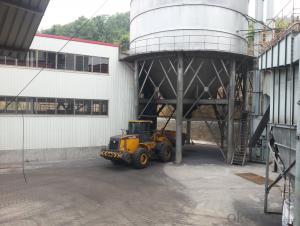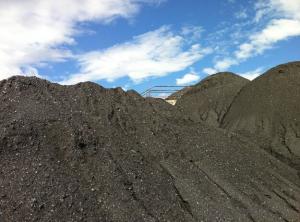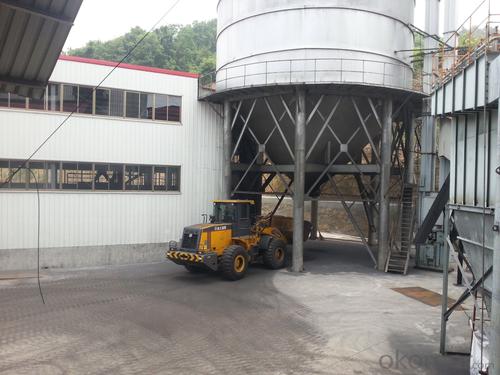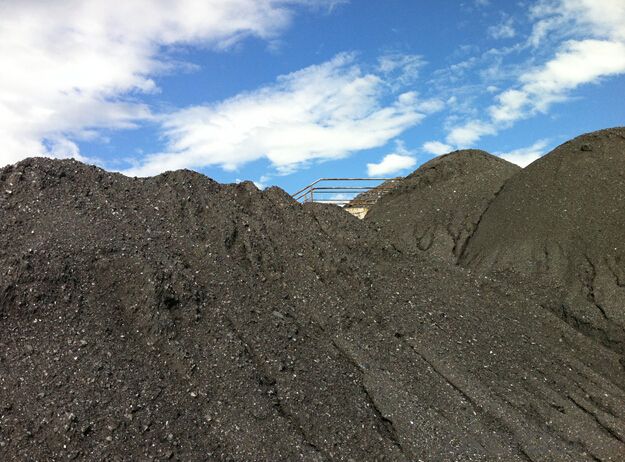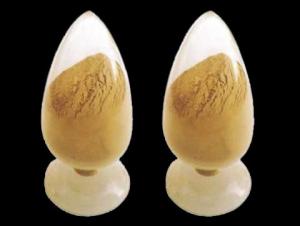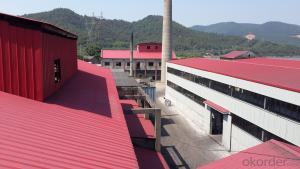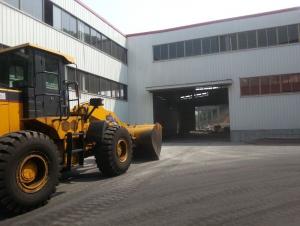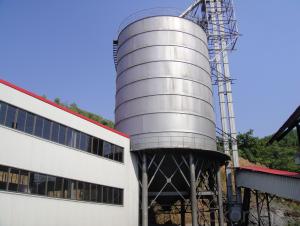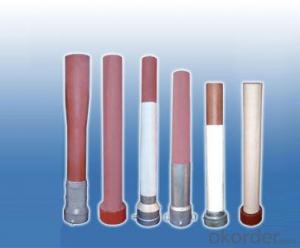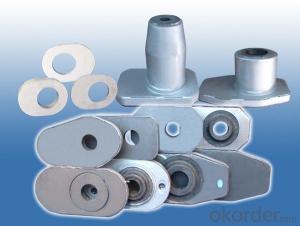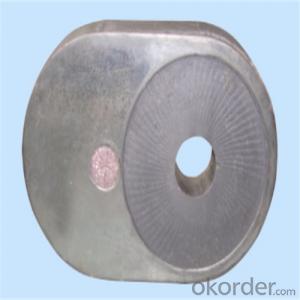Low Nitrogen Carbon Raiser Graphite Powder
- Loading Port:
- Shekou
- Payment Terms:
- TT or LC
- Min Order Qty:
- 20 m.t
- Supply Capability:
- 1000 m.t/month
OKorder Service Pledge
OKorder Financial Service
You Might Also Like
low nitrogen graphite petroleum coke
stable quality and supplying quantity
special steel, ductile iron and grey iron steel used carbon raiser
high carbon, low sulphur carbon raiser
punctual deivery carbon raiser
We are a leading graphite recarburizer manufacturer(graphite petroleum coke, graphite electrode scraps. graphite blocks, synthetic graphite scraps/powder, and carbon electrode paste ), reputed for reasonable price, superior and stable quality, on time delivery and professional service.
Calcined Petroleum Coke
FC:98.5%min,
S:0.5%max
A:0.8%max
V:0.7%max
Mositure:0.5%max
Size:1-5mm
We can also produce according to customers requirement, and please contact me with detailed requirement
This product is mainly used in steel-making and foundry. Calcined Petroleum Coke
Calcined Petroleum Coke comes from delayed coke which extracted from oil refinery. Although Calcined Petroleum Coke contains a little bit higher level of sulfur and nitrogen than pitch coke, the price advantage still makes it widely used during steel-making and founding as a kind of carbon additive/carburant.
Technology:
Laborary Equpment
In our lab,we has a high precision balance,mullfe furnace,sample making machine, dring box,sulfur measurement instrument and other calibratiing equipments.As a result,before deliverung to our customers,our products have to pass a strict test to ensure the quality and components.The testing reports will be sent to our customers to confirm untill they satisfy with it.
Packaging & Delivery
Packaging Detail:25kg paper bag into 1t weaving bag 5kg, 10kg and 20kg weaving bag into 1t weaving bag 25kg weaving bag put on pallet covered with entanglement wrap product direct into packing bag 25kg paper bag put on pallet covered with entanglement Wrap 25kg weaving bag into 1t weaving bag.
Delivery Details: 7 days
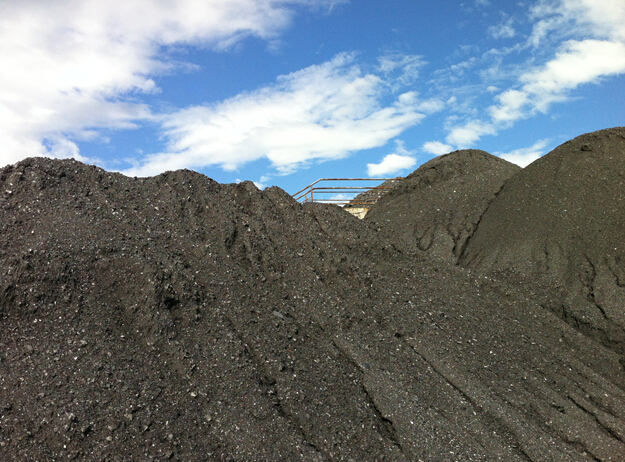
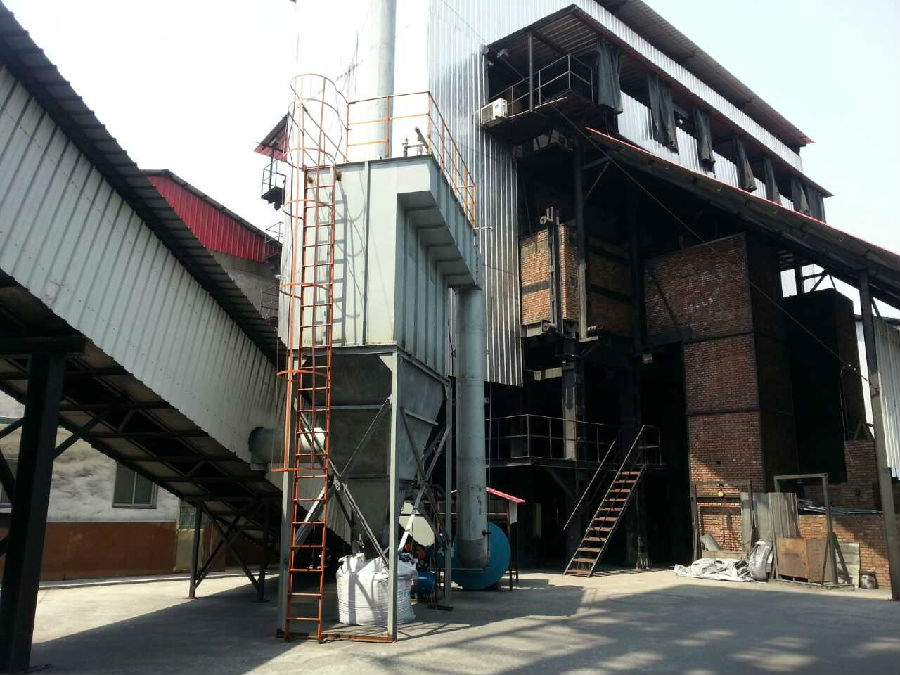
- Q: How do monolithic refractories contribute to the overall productivity of iron and steel plants?
- The overall productivity of iron and steel plants is greatly improved by monolithic refractories. These refractories are versatile and efficient because they can be shaped and installed without the need for joints or mortar. One significant way in which monolithic refractories boost the productivity of iron and steel plants is their ability to withstand high temperatures. They are designed to have excellent thermal shock resistance, meaning they can endure rapid temperature changes without cracking or breaking. This makes them suitable for use in blast furnaces, converters, and ladles, which require high temperatures. Using monolithic refractories in these critical areas allows iron and steel plants to operate at higher temperatures, resulting in increased production rates. These refractories provide effective insulation, reducing heat losses and improving energy efficiency. As a result, the plant saves costs and achieves higher output. Furthermore, monolithic refractories are well-known for their exceptional resistance to chemical attacks from molten metals and slags. They can withstand the corrosive effects of molten iron, steel, and other alloys, protecting the underlying structures and extending their lifespan. This reduces the need for maintenance and repairs, leading to less downtime and higher productivity. Additionally, monolithic refractories offer easy installation and maintenance, which further contributes to productivity. Unlike traditional refractories that require time-consuming bricklaying and jointing, monolithic refractories can be easily sprayed, troweled, or pumped into place, saving time and labor costs. Moreover, they can be repaired or replaced without major disruptions to the production processes, ensuring minimal downtime and maximizing overall plant productivity. In summary, monolithic refractories enhance the productivity of iron and steel plants in various ways, including their ability to withstand high temperatures, provide insulation and energy efficiency, resist chemical attacks, and offer easy installation and maintenance. Their ability to perform in extreme conditions and their cost-effectiveness make them crucial components in the iron and steel industry, ultimately contributing to increased output and profitability.
- Q: What are the main factors affecting the thermal expansion of monolithic refractories?
- The thermal expansion of monolithic refractories is influenced by various factors. These factors comprise the type of refractory material, the temperature range, the chemical composition, and the physical structure of the refractory. To begin with, the thermal expansion behavior of a refractory is significantly determined by its type of material. Different types of refractories, such as alumina-based, silica-based, and magnesia-based refractories, possess varying coefficients of thermal expansion (CTE). For instance, alumina-based refractories generally exhibit a lower CTE in comparison to silica-based refractories. Consequently, the choice of refractory material holds great influence over its thermal expansion characteristics. Secondly, the thermal expansion of a refractory is affected by the temperature range to which it is exposed. As the temperature rises, the refractory material expands due to the absorption of thermal energy. However, different refractories demonstrate different expansion behaviors depending on temperature. Some refractories may exhibit a linear or near-linear expansion with temperature, while others may display non-linear or step-wise expansion. Hence, the temperature range of operation is a critical factor in determining the suitability of a refractory for a specific application. The chemical composition of the refractory also has an impact on its thermal expansion. The presence of various chemical elements and compounds in the refractory material can influence its expansion behavior. For instance, the addition of specific oxides, like magnesia or zirconia, can modify the CTE of the refractory. Similarly, impurities or variations in the chemical composition can introduce discrepancies in expansion characteristics among refractories of the same type. Lastly, the physical structure of the refractory, encompassing factors such as porosity, density, and microstructure, can influence thermal expansion. The existence of open or closed pores within the refractory can affect its ability to expand uniformly under thermal stress. The density of the refractory also plays a role, as denser refractories tend to have lower thermal expansion. Moreover, the microstructure, including grain size and orientation, can impact the overall expansion behavior of the refractory. To conclude, the primary factors influencing the thermal expansion of monolithic refractories include the type of refractory material, temperature range, chemical composition, and physical structure. A comprehensive understanding of these factors is crucial in selecting the appropriate refractory for a specific application to ensure optimal performance and durability.
- Q: How are monolithic refractories used in the repair and maintenance of ladles and tundishes?
- Monolithic refractories are extensively used in the repair and maintenance of ladles and tundishes in the steel industry. These refractories are specially designed to withstand the extreme conditions of high temperatures, thermal shock, and chemical erosion that occur during the steelmaking process. When it comes to the repair of ladles, monolithic refractories are used to line the inner walls of the ladle. Ladles are subjected to intense heat and corrosive molten metal, and the refractory lining provides insulation and protection against these harsh conditions. The lining also helps to maintain the desired temperature of the molten metal, ensuring that it remains in a suitable state for processing. In the case of tundishes, monolithic refractories are used to line the bottom and sides of the tundish, as well as the nozzle and impact pad. Tundishes are responsible for distributing molten metal to multiple casting molds and are exposed to high temperatures and thermal shocks. The refractory lining helps to maintain the necessary temperature and prevent any leakage of molten metal. During the repair and maintenance process, monolithic refractories are applied as a dense, high-strength material that is easy to shape and install. They can be shaped into various forms such as bricks, castables, and gunning mixes, depending on the specific requirements of the ladle or tundish. These refractories are often applied using specialized techniques, such as gunning or casting, to ensure proper adhesion and longevity. In addition to their thermal and chemical resistance properties, monolithic refractories also offer excellent mechanical strength and resistance to abrasion. This is crucial in ladles and tundishes, as they are subjected to constant wear and tear from the movement of molten metal and the handling of refractory materials during repair and maintenance. Overall, monolithic refractories play a critical role in the repair and maintenance of ladles and tundishes in the steel industry. They provide the necessary insulation, protection, and durability required to withstand the demanding conditions of steelmaking.
- Q: How do monolithic refractories resist thermal shock in the iron and steel industry?
- Monolithic refractories are designed specifically to withstand thermal shock in the iron and steel industry, achieved primarily through their unique composition and structure. To begin, high-quality raw materials, such as alumina, magnesia, and silica, are used to create monolithic refractories. These materials are chosen carefully for their excellent thermal properties, including a high melting point, low thermal conductivity, and favorable thermal expansion characteristics. The manufacturing process of monolithic refractories involves precise control over the distribution of grain sizes and the addition of bonding agents. This results in a dense and uniform structure, enhancing their resilience against thermal shock. The bonding agents also play a crucial role in strengthening and maintaining the integrity of the refractories. Furthermore, additives are often incorporated into monolithic refractories to increase their resistance to thermal shock. These additives, such as zirconia, silicon carbide, or graphite, enhance the refractories' ability to endure rapid temperature changes. Moreover, monolithic refractories are designed with low porosity to minimize the penetration of molten metal or slag into the material. This helps prevent the formation of cracks and spalling, which can occur due to thermal shock. In addition, monolithic refractories are commonly applied as a lining or coating on furnace surfaces or other equipment. This creates a protective barrier, reducing direct exposure to extreme temperatures and thermal cycling. Overall, the combination of high-quality raw materials, meticulous manufacturing processes, additives, low porosity, and appropriate application techniques make monolithic refractories highly resistant to thermal shock in the iron and steel industry. They can endure rapid temperature changes, prevent cracks, and maintain their structural integrity, ensuring the reliable and efficient operation of furnaces and other equipment in this demanding industry.
- Q: What are the key properties of gunning mixes used for monolithic refractory repairs?
- The key properties of gunning mixes used for monolithic refractory repairs are high strength, good adhesion, excellent workability, and high resistance to thermal shock and abrasion. These properties ensure that the gunning mix can withstand the intense heat and harsh conditions of refractory applications, providing a durable and long-lasting repair solution.
- Q: How do monolithic refractories enhance the performance of ladle and tundish preheating systems?
- Monolithic refractories play a crucial role in enhancing the performance of ladle and tundish preheating systems in several ways. Firstly, monolithic refractories offer excellent thermal insulation properties, which help in retaining heat within the ladle and tundish preheating systems. This insulation capability minimizes heat loss, ensuring that the preheating systems operate at optimal temperatures. By maintaining a consistent and high heat level, monolithic refractories enable efficient preheating of ladles and tundishes, reducing the time required for the preheating process. Secondly, monolithic refractories have high refractoriness, meaning they can withstand extreme temperatures without undergoing any significant degradation. This feature is essential in ladle and tundish preheating systems, as they are subjected to intense heat during operation. The ability of monolithic refractories to withstand high temperatures ensures their longevity and prevents premature failure, leading to improved performance and reliability of the preheating systems. Furthermore, monolithic refractories have excellent resistance to thermal shock. Ladles and tundishes are often subjected to rapid temperature changes during the preheating process, which can cause thermal stress and result in cracking and spalling of the refractory lining. However, monolithic refractories, with their superior thermal shock resistance, can withstand these rapid temperature fluctuations without sustaining any significant damage. This resistance to thermal shock ensures the integrity of the refractory lining, prolonging the lifespan of the ladle and tundish preheating systems and enhancing their overall performance. Additionally, monolithic refractories offer good mechanical strength and abrasion resistance. Ladles and tundishes are frequently subjected to mechanical forces, such as stirring and pouring of molten metal. The presence of monolithic refractories with high mechanical strength and abrasion resistance ensures that the refractory lining remains intact even under such harsh conditions. This durability allows for prolonged and efficient operation of the preheating systems, contributing to their enhanced performance. In summary, monolithic refractories enhance the performance of ladle and tundish preheating systems by providing excellent thermal insulation, high refractoriness, resistance to thermal shock, and good mechanical strength and abrasion resistance. These properties enable efficient and reliable preheating, minimize heat loss, prevent premature failure, and prolong the lifespan of the preheating systems, ultimately improving their overall performance.
- Q: What are the main factors affecting the thermal conductivity of monolithic refractories?
- The main factors affecting the thermal conductivity of monolithic refractories are the composition and structure of the refractory material, the porosity and density of the material, the presence of any impurities or defects, and the temperature and pressure conditions at which the refractory is being used.
- Q: How do monolithic refractories prevent thermal shock in the iron and steel industry?
- Monolithic refractories prevent thermal shock in the iron and steel industry by providing a continuous and seamless lining that can withstand extreme temperatures and sudden temperature changes. Their high thermal conductivity and low thermal expansion properties allow them to effectively distribute and absorb heat, reducing the likelihood of thermal stress and cracking. Additionally, their ability to form strong bonds with the furnace walls prevents the entry of hot gases and molten metal, further protecting against thermal shock.
- Q: What are the recommended installation techniques for monolithic refractories?
- The recommended installation techniques for monolithic refractories typically involve proper surface preparation, mixing of refractory materials, and precise application. It is crucial to clean and remove any loose debris from the substrate before installation. The refractory materials should be mixed thoroughly with the appropriate water content to achieve the desired consistency. It is recommended to use vibration or tamping techniques during application to remove air pockets and ensure proper compaction. Careful curing and drying processes should be followed to prevent thermal shock and achieve optimal performance.
- Q: How do monolithic refractories withstand the thermal cycling in aluminum smelting applications?
- Monolithic refractories have been specifically developed to endure the extreme thermal cycling conditions that arise in aluminum smelting applications. The exceptional properties of these refractories enable them to withstand the rapid and repetitive heating and cooling cycles without experiencing significant damage or failure. A key characteristic of monolithic refractories is their remarkable thermal shock resistance, which allows them to withstand sudden temperature changes without cracking or spalling. Throughout the aluminum smelting process, the refractories are exposed to extreme temperatures when molten aluminum is poured into the molds or when the molten metal comes into contact with the refractory lining. It is essential for the refractories to quickly absorb and dissipate heat to prevent any thermal shock damage. Furthermore, monolithic refractories possess a high thermal conductivity, which facilitates the efficient transfer of heat away from the refractory lining. This effectively reduces the risk of thermal stress and thermal fatigue. By dispersing the heat generated during the smelting process, the refractories minimize temperature variations within the lining, thereby preventing the occurrence of cracks or fractures. Moreover, monolithic refractories exhibit excellent chemical resistance, a crucial characteristic in aluminum smelting applications. These refractories are formulated to resist the corrosive effects of molten aluminum and other chemicals present in the smelting process. By offering resistance to chemical corrosion, the refractories help maintain the integrity of the refractory lining and extend its service life. Additionally, monolithic refractories are often reinforced with fibers or other structural materials to enhance their mechanical strength and durability. These reinforcements provide added resistance against mechanical stresses, such as thermal expansion and contraction, which arise during the thermal cycling process. In conclusion, the purpose of monolithic refractories is to withstand the thermal cycling conditions encountered in aluminum smelting applications. Their exceptional thermal shock resistance, high thermal conductivity, excellent chemical resistance, and enhanced mechanical strength enable them to endure extreme temperature fluctuations without experiencing significant damage. These refractories play a crucial role in maintaining the integrity and efficiency of the smelting process in the aluminum industry.
Send your message to us
Low Nitrogen Carbon Raiser Graphite Powder
- Loading Port:
- Shekou
- Payment Terms:
- TT or LC
- Min Order Qty:
- 20 m.t
- Supply Capability:
- 1000 m.t/month
OKorder Service Pledge
OKorder Financial Service
Similar products
Hot products
Hot Searches
Related keywords
